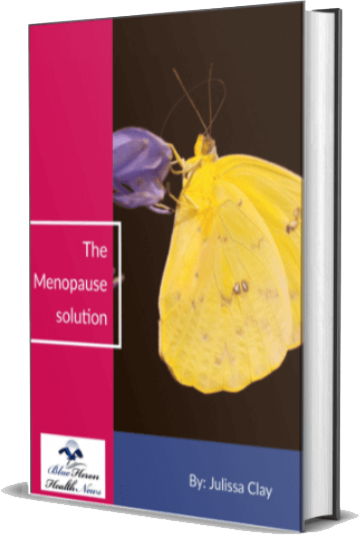
The Menopause Solution After going through the review of The Menopause Solution it can be concluded easily that you should try this program at least once if menopause is destroying your internal organs or deteriorating your physical health to a considerable level. This program can help in resolving your health issues caused by perimenopause and menopause in a completely natural manner. You can use this program without any risk as you can get your money back if you are not satisfied with its results.
What is the impact of menopause on bone health?
Menopause significantly impacts bone health, primarily due to the decline in estrogen levels. Estrogen is a hormone that plays a crucial role in maintaining bone density and overall skeletal health. As women enter menopause, the reduction in estrogen accelerates bone loss, increasing the risk of osteoporosis and fractures. Here’s a detailed exploration of the impact of menopause on bone health:
1. Role of Estrogen in Bone Health
A. Bone Remodeling and Density
- Bone Remodeling Process: Bone tissue is continuously being remodeled through a process that involves the resorption (breakdown) of old bone by osteoclasts and the formation of new bone by osteoblasts. Estrogen helps regulate this process by maintaining a balance between bone resorption and formation.
- Estrogen’s Protective Role: Estrogen inhibits bone resorption by decreasing the activity and lifespan of osteoclasts, cells responsible for breaking down bone tissue. It also supports the activity of osteoblasts, cells that form new bone.
B. Calcium Absorption and Retention
- Calcium Homeostasis: Estrogen enhances calcium absorption in the intestines and reduces calcium excretion through the kidneys, helping maintain adequate calcium levels for bone mineralization.
2. Bone Loss During Menopause
A. Accelerated Bone Resorption
- Decline in Estrogen Levels: As women reach menopause, typically around age 50, the decline in estrogen levels leads to increased osteoclast activity. This accelerates bone resorption, resulting in a net loss of bone density.
- Rate of Bone Loss: Bone loss is most rapid during the first few years after menopause, with an average annual decline in bone density of 2-3% in the spine and hip. The rate of bone loss tends to slow but continues in postmenopausal years.
B. Impact on Bone Microarchitecture
- Microarchitectural Changes: Menopause-related bone loss affects not only the quantity of bone but also its quality. The trabecular (spongy) bone within the vertebrae and the inner structure of long bones can become thinner and more fragile, leading to an increased risk of fractures.
- Loss of Bone Mass: Both cortical (dense outer layer) and trabecular bone are affected, but trabecular bone loss is more pronounced. This type of bone is more metabolically active and responsive to hormonal changes.
3. Increased Risk of Osteoporosis and Fractures
A. Osteoporosis
- Definition and Prevalence: Osteoporosis is a condition characterized by decreased bone density and mass, leading to fragile bones that are more prone to fractures. It is particularly common in postmenopausal women due to estrogen deficiency.
- Diagnosis: Osteoporosis is typically diagnosed through bone mineral density (BMD) testing, often using dual-energy X-ray absorptiometry (DEXA). A T-score of -2.5 or lower indicates osteoporosis.
B. Fracture Risk
- Common Fracture Sites: The most common sites of fractures in postmenopausal women include the spine (vertebral fractures), hip, and wrist. Vertebral fractures can occur silently but may cause significant pain and disability.
- Consequences of Fractures: Fractures, particularly hip fractures, can lead to significant morbidity and mortality. They often result in decreased mobility, loss of independence, and increased healthcare costs.
4. Contributing Factors to Bone Health Decline
A. Nutritional Factors
- Calcium and Vitamin D Deficiency: Inadequate intake of calcium and vitamin D can exacerbate bone loss. Calcium is essential for bone mineralization, while vitamin D is crucial for calcium absorption and bone health.
- Protein Intake: Adequate protein intake is important for bone health, as proteins are a component of the bone matrix. Insufficient protein intake can weaken bones.
B. Lifestyle Factors
- Physical Inactivity: Sedentary behavior contributes to bone loss. Weight-bearing and resistance exercises are important for maintaining bone density and strength.
- Smoking and Alcohol Consumption: Smoking and excessive alcohol consumption are risk factors for osteoporosis and can accelerate bone loss.
C. Medical Conditions and Medications
- Chronic Conditions: Conditions such as rheumatoid arthritis, hyperthyroidism, and gastrointestinal diseases that impair nutrient absorption can increase the risk of bone loss.
- Medications: Long-term use of glucocorticoids, certain anticonvulsants, and other medications can negatively impact bone health.
5. Preventive and Therapeutic Strategies
A. Hormone Replacement Therapy (HRT)
- Estrogen Replacement: HRT can help mitigate the rapid bone loss that occurs during menopause by supplementing estrogen levels. It is most effective when started around the time of menopause but should be considered based on individual risk factors and health status.
- Risks and Benefits: While HRT can significantly reduce the risk of fractures, it also carries potential risks, such as an increased risk of breast cancer, cardiovascular disease, and thromboembolism. The decision to use HRT should be made on an individual basis with a healthcare provider.
B. Calcium and Vitamin D Supplementation
- Recommended Intake: Adequate calcium and vitamin D intake is crucial for bone health. Postmenopausal women are generally recommended to consume 1,200 mg of calcium and 600-800 IU of vitamin D daily.
- Sources: Dietary sources of calcium include dairy products, leafy greens, and fortified foods. Vitamin D can be obtained from sunlight exposure, fortified foods, and supplements.
C. Lifestyle Modifications
- Exercise: Weight-bearing and resistance exercises, such as walking, jogging, strength training, and yoga, can help maintain bone density and reduce the risk of fractures.
- Healthy Diet: A balanced diet rich in calcium, vitamin D, protein, and other nutrients supports bone health. Limiting caffeine and salt intake, which can reduce calcium absorption, is also beneficial.
D. Medications
- Bisphosphonates: Medications such as alendronate and risedronate can help prevent bone loss and reduce fracture risk by inhibiting bone resorption.
- Selective Estrogen Receptor Modulators (SERMs): Drugs like raloxifene mimic estrogen’s protective effects on bones without some of the risks associated with estrogen therapy.
- Denosumab and Teriparatide: These medications are used for more severe cases of osteoporosis and work by different mechanisms to increase bone density and strength.
Conclusion
Menopause significantly impacts bone health, primarily through the decline in estrogen levels, leading to accelerated bone loss and an increased risk of osteoporosis and fractures. Understanding the factors contributing to bone health decline and implementing preventive and therapeutic strategies can help mitigate these risks. Women should work closely with healthcare providers to assess their bone health, consider appropriate interventions, and adopt lifestyle changes to maintain bone strength and overall health during and after menopause.

The Menopause Solution™ So if you do not want to be ill-treated by the symptoms of your menopause then you must try it once. It will surely work for you. its price has been reduced only for a limited period. So you should place your order on the official website to avail of this benefit and make your life happier again.